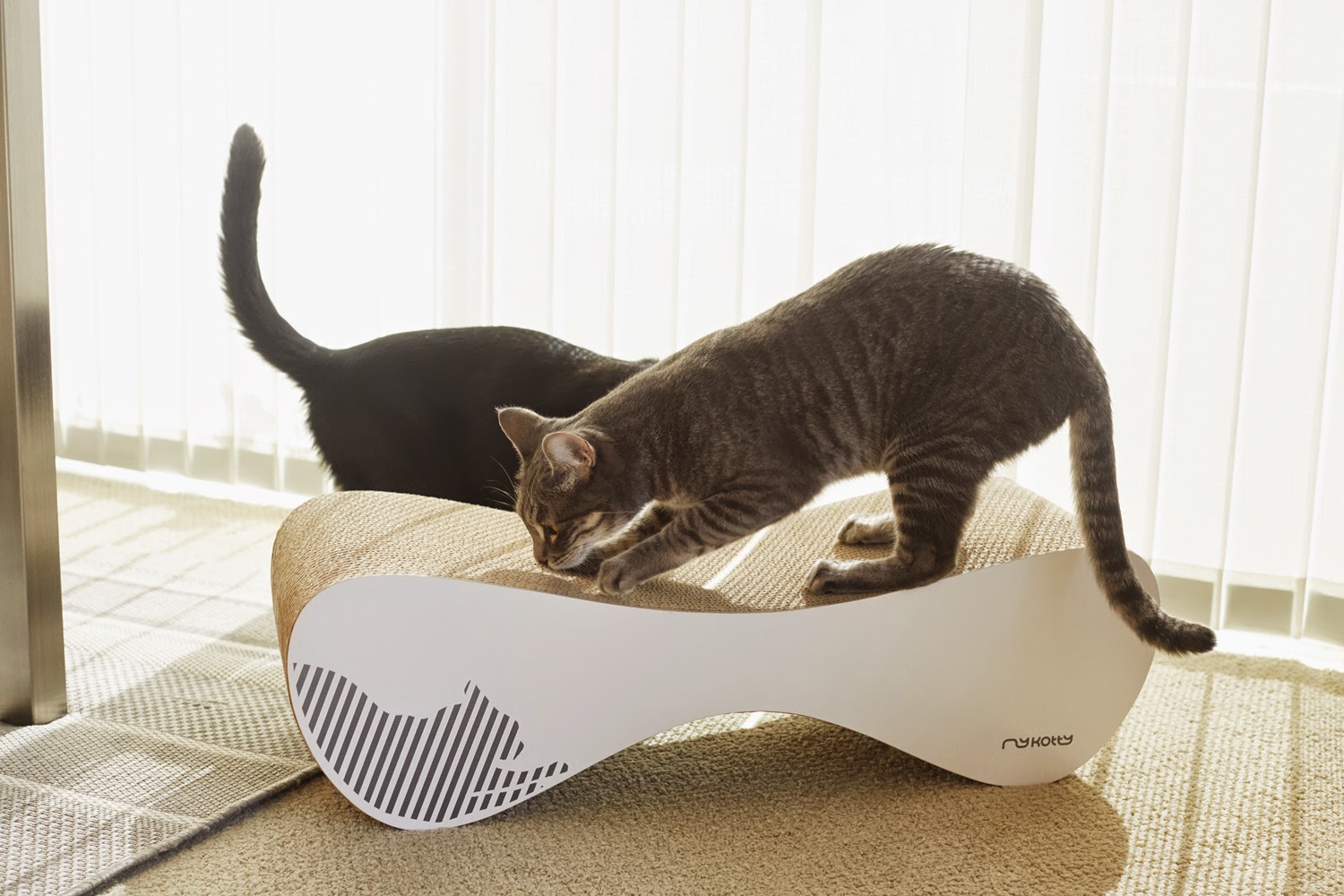We often get asked about the durability and length of service life of cardboard scratchers. How long should a scratcher last? When to replace it? Will it be able to handle the weight of more than one cat? We’re providing answers to these and other question in the text below to help you make purchase decisions and tell cases of clear grounds for complaint from situations of standard wear and tear.
The number of cats
Let’s start from the fundamental question – how many cats do you own? If the answer is more than one, does each of them have an own scratcher, or do they share one? The wear and tear of a scratcher will be directly proportional to the number of claws (and the intensity of scratching, but we’ll get back to that in a moment), which is why a scratcher intended to be used by one cat may turn quickly into cardboard confetti after a number of close encounters with a scratcher-loving clowder! Our suggestion is to be fair and give each of your furry friends an own scratcher and make sure they all have an individual – but similar – surface to practice their scratching on. That’s why we’ve come up with furniture sets that will cater for the needs of the most demanding natural born scratchers.
To scratch, or not to scratch? That is the question!
It must’ve occurred to you more than once that your cat has reacted to a new gift with a cold wall of indifference – we’ve been there too, of course! Sometimes a scratcher’s cardboard box is better than its contents (let alone a scratcher; it gets even worse when it’s a couch!). Judging by your feedback, myKotty scratchers have been quickly getting quite some love among your fur-iends, but there are exceptions as well, and in such cases you can encourage your cat to scratch using different methods:
- try to teach your cat how to use the scratcher, draw their interest – fix their favourite toy to the scratcher or place a snack on it, make the process of learning fun – show how to use the piece of furniture by scratching it in the cat’s presence, and if you have a whole cat gang at home, teach the leader how to use the scratcher first so that others will follow
– give your cat some time to become familiar with and take to the new cardboard family member – put the scratcher in a different place, preferably one that is the cat’s favourite ‘hangout’ spot, where they like to lie down and rest, e.g. near the couch that has been the cat’s frequent “scratch practice tool”
– sprinkle the scratcher with some herbs that cats like, or use special catmint or valerian spray
And if none of the above methods proves effective, you can still:
- use of the scratcher according to your own needs and make the cat jealous (the LUI scratcher used as a bookshelf looks amazing!)
- return the scratcher with a heavy heart (myKotty gives you even 100 days to do it!)
The very few cases of returns show that the last option is chosen really rarely, and the photos you send prove that when the scratchers are unboxed, it’s love at first sight, which your cats express by… sinking their claws in the new toy-furniture with visible pleasure!
Scratching style
The standard wear and tear of the scratcher depends on the scratching style of your cat. There are cats that don’t scratch, like, at all (and the scratcher will last you years, with no major traces of damage). The scratching styles of cats who like to sharpen their claws will differ – starting from scratching the horizontal surface of the cardboard through scratching holes and ending with scratching the front of the furniture. It may happen that if you own more than one cat, you’ll notice different types of traces of scratching in various parts of your scratcher – from specific holes in the cardboard to completely scratched sides. Claw trimming will play a part here as well – if you do it on a regular basis, the scratcher will be less damaged because shorter claws won’t sink that deep in the cardboard. Check out some examples of different scratching styles below:
A scratcher is no cat – it has one life only
If you have a cat who is a keen scratcher, you’ll see traces of scratching on the scratcher already after the first month of use. If you have a scratching fiend at home, the scratcher may be done after even 6 months. Again, there’s no universal rule here – every cat is a different story. They all have different needs, and the pace of wear and tear will depend on their individual habits.
Below you can see a few examples of wear and tear of a scratcher in different scenarios:
1 cat who scratches rarely, approx. 3 months of use
1 cat who is a keen scratcher, approx. 6 months of use
2 cats who scratch every day, approx. 1 month of use
Cats love cardboard, that’s why a scratcher made of this material will still be a good solution even if your cat is not a particularly eager scratcher. As this unique piece of cat furniture can be used in many different ways, it will also work well as a cat ‘playground’ or bed. Choose models that come with information indicating their maximum load-carrying capacity. Cardboard cat furniture is able to carry significant loads – a perfect example being our VIGO scratcher – a true ‘tough guy’, one of the finest in the class, ready to bear a cat and a human weighing together a total of 95 kg!
As you can see, every cat has their own ways, which is why it’s hard to precisely determine the service life of a cardboard scratcher. Sometimes it will be 6-8 months; other times it may be even a few years. If you’ve finished reading and are still not sure if this type of product is right for your cat – do let us know, we’ll be more than glad to suggest something 🙂




